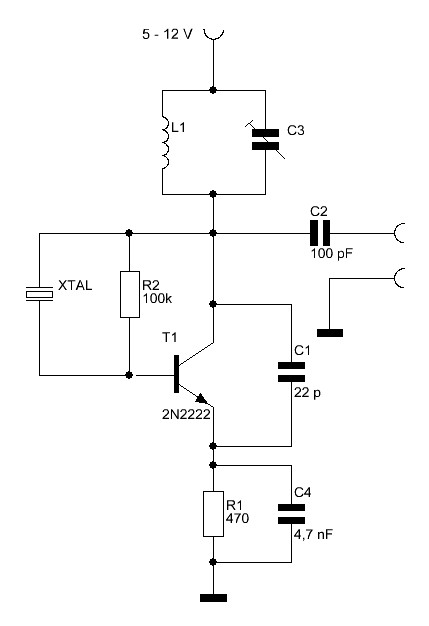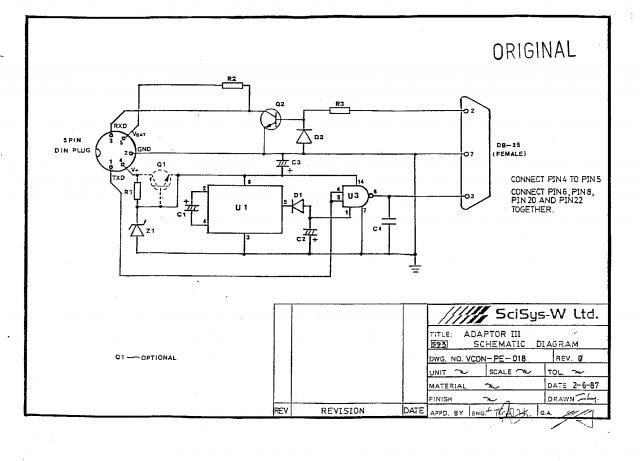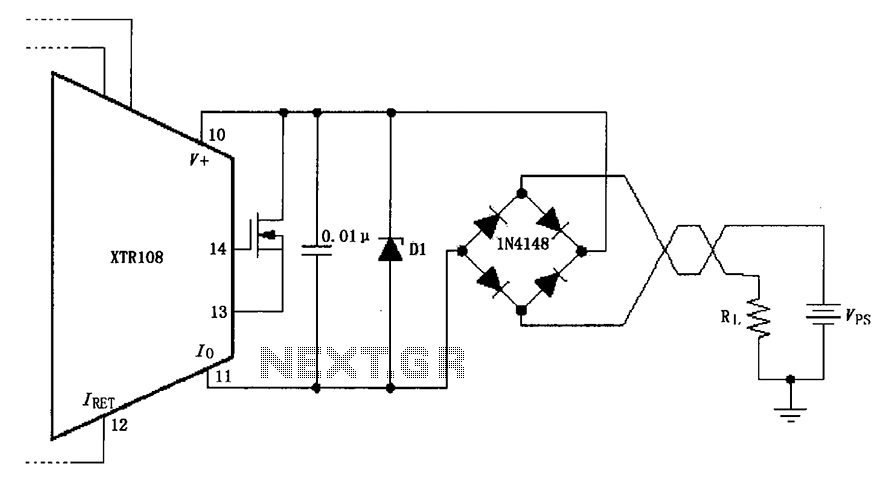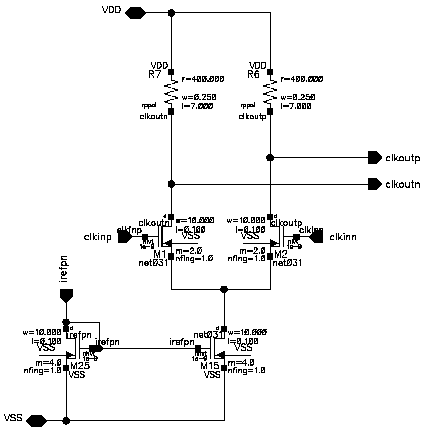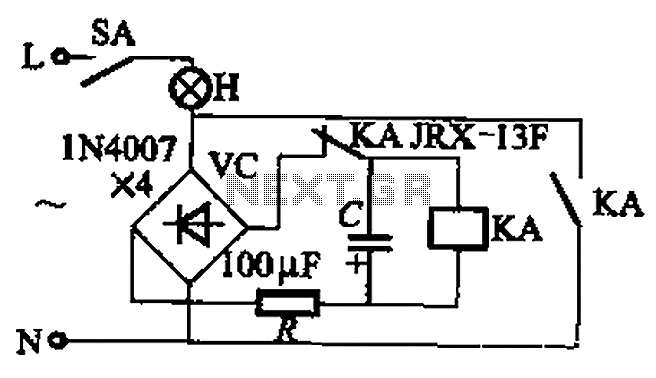
Voice link over spread spectrum radio
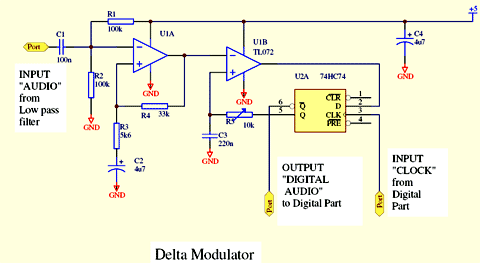
Communication systems that utilize spread spectrum techniques are more resistant to noise, signal fading, and the Doppler effect compared to narrow-band systems. Through code division of signals (CDMA), frequency bands can be utilized more effectively, enhancing transmission privacy. Wide-band systems can operate in parallel with narrow-band systems on the same frequency. Processing gain enables a reduction in transmitter output power. The primary methods employed in spread spectrum systems include frequency hopping, time hopping, direct sequence, or their hybrids. Spread spectrum signals can support user signals through conventional analog or digital modulation. However, using AM modulation can compromise the uniform power spectral density of the signals, making it more challenging to correlate the PN sequence at the receiver. Analog modulated signals can be demodulated without prior knowledge of the PN code, while frequency modulation is preferred for frequency hopping spread spectrum. In direct sequence spread spectrum, digital modulation of the PN code is most suitable, with bipolar phase shift keying (BPSK) being employed. An analog acoustic signal is converted to digital form, where the digitized voice is EX-ORed with a digital PN (pseudo-noise) sequence. The modified PN code drives a double balanced mixer (DBM) configured as a biphase shift keyer (spreading spectrum). After amplification, the signal is transmitted via an antenna. In the receiver, the wideband signal, after amplification, is EX-ORed with the original PN code (despreading spectrum). The narrow-band signal is modulated using BPSK. Following demodulation, the digitalized voice is converted back to analog. A crucial condition is to accurately know the PN code, its frequency, and phase to better than ½ byte. To synchronize the PN codes, three identical channels are utilized. In addition to the main branch, two additional branches are present. The signal in the LATE branch is EX-ORed with a PN code that is delayed compared to the PN code used in the main branch by about 1 byte, while the signal in the EARLY branch is EX-ORed with a PN code that is earlier than the main PN code by about 1 byte. When the frequency of the PN generator in the receiver is lower than that in the transmitter, a peak RSSI is observed in the LATE branch. Conversely, when the frequency of the PN generator in the receiver is higher than in the transmitter, a peak RSSI is observed in the EARLY branch. Both peaks (RSSI LATE and RSSI EARLY) are used to adjust the VCXO (4MHz) generator in the receiver. This ensures that the PN generators in the transmitter and receiver operate at identical frequency and phase, enabling successful despreading of the spectrum and reception of the narrow-band BPSK signal in the receiver. A sigma-delta modulator is employed as an analog-to-digital (A/D) converter, where sampled values of the audio signal are compared with a staircase approximation of the output signal. If the sampled waveform exceeds the staircase approximation, a binary '1' is generated; if it is less, a binary '0' is produced. These pulses (0s or 1s) form the digitalized voice. The waveform of the analog signal after delta modulation produces 1s when the analog signal increases and 0s when it decreases. During periods of constant value or absence of signal, the output of the delta-sigma modulator oscillates between 1s and 0s. At the receiver, the transmitted pulses are integrated and passed through a low-pass filter. The output of the BPSK demodulator does not recover the original data polarity, resulting in a stream of bits that may be identical or inverted compared to the original digitalized voice stream from the transmitter. Over long transmission times, the polarity of the digital signal may change multiple times due to disturbances in the operation of the BPSK demodulator. Since a D/A converter consisting of an integrator and low-pass filter is used, changes in the digital signal from the BPSK demodulator only affect the phase of the audio output signal, which is inaudible, negating the need for polarity recovery in the receiver. The crystal oscillator generates a sinusoidal signal at 16MHz for the digital part and a sinusoidal signal at 48MHz to create the carrier frequency. The 48MHz signal is multiplied by four and amplified, resulting in a sinusoidal carrier signal at 192MHz, which is fed into the DBM configured as a biphase shift keyer. The carrier is spread using a modified PN sequence. The spread signal, after amplification, is transmitted through an antenna. The 16MHz signal from the crystal oscillator feeds into a binary divider, producing a 62.5kHz signal for sampling in the delta-sigma modulator and a 4MHz signal to drive the PN generator. The PN generator consists of a 74HC164 shift register and 74HC86 EX-OR gates. The PN sequence is EX-ORed with the digitized audio. The modified PN spreading code drives the DBM to spread the 192MHz carrier. Connecting the second input of the NAND gates to ground allows the transmitter to generate a narrow-band BPSK signal or a non-modulated carrier at 192MHz. The audio signal, after amplification, is sent through a limiter and low-pass filter. The delta-sigma modulator converts the audio into a serial data stream. This 1-byte A/D converter utilizes a 74HC74 trigger and an operational amplifier configured as a comparator. The audio signal in the delta-sigma modulator is sampled using a 62.5kHz signal from the binary divider. The binary stream (digitized audio) from the delta modulator is modified with the PN code via an EX-OR gate. The microphone signal is amplified, and its dynamics are compressed. Following amplification by T1 and through a variable divider, the signal is directed to output amplifiers T3 and T4. The divider consists of a 22k resistor and T2, with its attenuation dependent on the voltage across a 47µF capacitor. As the output signal amplitude increases, the capacitor charges more, increasing the attenuation from the variable divider, thereby reducing the output signal amplitude. Conversely, when the output signal amplitude decreases, the capacitor charges less, decreasing the attenuation and allowing the output signal amplitude to increase. This results in small-amplitude signals being amplified more than large-amplitude signals, leading to an output from T4 with approximately constant amplitude audio signals. The output from T4 proceeds to a low-pass filter formed by T5 and T6, limiting the audio spectrum to 3 kHz with an 8x/octave decline. Coupling capacitors of 0.1µF restrict the audio spectrum down to approximately 30Hz. After passing through the limiter and low-pass filter, the audio signal is amplified by the first operational amplifier. The resistor is adjusted to achieve maximum audio signal amplitude without distortion. The second operational amplifier acts as a comparator, comparing sampled values of the signal with a staircase approximation taken from a 0.22µF capacitor. A variable resistor is adjusted to minimize distortion. If the sampled waveform exceeds the staircase approximation (indicating an increase in signal), a '1' is sent to the input of the 74HC74 trigger. If the sampled waveform is less than the staircase approximation (indicating a decrease in signal), a '0' is sent to the input. A 62.5kHz signal from the binary divider provides the sampling clock. In the absence of audio signals, alternating '1's and '0's are generated, resulting in a digital signal of 31.25kHz. The delta-sigma modulator converts audio into a serial data stream for the transmitter's digital section. The 16MHz generator signal, after buffering, is sent to a 74HC4040 binary divider. Dividing by 256 yields a 62.5kHz signal for audio sampling in the delta-sigma modulator. The 16MHz signal, divided by four, provides a 4MHz signal to drive the PN generator. The PN generator, consisting of an 8-stage 74HC164 shift register and 74HC86 EX-OR gates in a feedback circuit, utilizes seven registers to generate a PN code of 127 bytes in length. The PN sequence is directed to the second NAND gate. Grounding its second input allows the transmitter to generate a narrow-band BPSK signal. If the second input of the NAND gate is not grounded, the PN sequence is sent to an EX-OR gate, where the binary stream (digitized audio) from the delta modulator modifies the PN sequence. If the digitized audio value is '1', the PN sequence is inverted; if it is '0', the PN code passes unchanged. The modified PN sequence is sent to the third NAND gate, where grounding its second input results in the transmitter generating a non-modulated carrier. Both switches S1 and S2 facilitate testing; using S2 generates a carrier only to aid in adjusting the RF part of the transmitter and downconverter in the receiver. Utilizing S1 (with S2 not engaged) produces a narrow-band BPSK signal, which assists in adjusting the BPSK demodulator in the receiver. The fourth NAND gate is configured as an inverter, inverting the modified PN sequence. Both signals WY and /WY drive the double balanced mixer configured as a BPSK modulator. The oscillator with T1 is stabilized by a 16MHz crystal. The output from the emitter of T1 is a 16MHz signal that passes through an amplifier-limiter with T5, resulting in a square wave signal at 16MHz, which is buffered before entering the binary divider in the digital section. The LC circuit in the collector of T1 is tuned for a frequency of 48MHz, which is then sent to a multiplier (T2) that produces a 192MHz signal. The output from T2 is buffered to yield a 192MHz signal (the carrier), which is phase modulated by the double balanced mixer configured as a BPSK modulator, utilizing the modified direct PN sequence for spreading. The output of the mixer produces a spread spectrum signal, where 90% of its energy occupies a bandwidth of 8MHz, ranging from 188MHz to 196MHz (carrier frequency +/- the clock frequency of the PN generator). The spread spectrum signal is buffered and can be amplified by a power amplifier, which must possess a minimum bandwidth of 8MHz.Communication systems using spread spectrum techniques, compare to narrow-band systems are more resistant for noises, signal fading, Doppler effect. Because of code division of signals (CDMA) we can more effective use frequency band and we can increase privacy of transmision.
Wide-band systems can be used paralell with narrow-band systems using th e same frequency. Process gain allows to reduce output power of transmitter. Major methods used in spread spectrum systems are: Rfequency hopping, time hopping, direct sequence or their hybrids. Spread spectrum signals can support any users signal by conventional analogue or digital modulation. However using AM modulation will destroy signals uniform power spectral density, and it will make more difficult to correlate PN sequence in receiver.
Analogue modulated signals are possible to be demodulated without any knowledge of PN code. Frequency modulation is better with frequency hopping spread spectrum. When we use direct sequence spread spectrum, the most suitable will be digital modulation of PN code. We used bipolar phase shift keying. Analogue acoustic signal is converted to digital. Digitalised voice is EX-ORed with digital PN (pseudo-noice) sequence. Modified PN code drives DBM (double balanced mixer) configured as biphase shift keyer. (spreading spectrum). After amplification goes to antenna. In receiver wideband signal arter amplification is EX-Ored with original PN code (despreading spectrum).
Narrow-band signal is BPSK modulated. After demodulation, digitalized voice is converted to analog. Main condition is to know PN code, its frequency and phase with precision better than ½ byte. o synchronisate PN codes three identical channels are used. Except main branch, we have 2 additional branches. Signal in LATE branch is EX-Ored with PN code which is delayed compare to PN code used in main branch about 1 byte. Signal in EARLY branch is EX-Ored with PN code which is earlier than main PN code about 1 byte. When frequency of PN generator in receiver is lower than in transmitter, we receive peak RSSI LATE in LATE branch.
When frequency of PN generator in receiver is higher than in transmitter, we receive peak RSSI EARLY in EARLY branch. Both peaks (RSSI LATE and RSSI EARLY) are used to adjust generator VCXO (4MHz) in receiver. So we have PN generators in transmitter and in receiver have identical frequency and phase. Only in this case is posible to despread spectrum and receive narrow-band signal BPSK in receiver. As a analog to digital (A/D) converter sigma-delta modulator is used. The sampled values of audio signal is compared with staircase approximation of output signal. If the sampled waveform exceeds the staircase approximation, 1 is generated. If the sampled waveform is less than the staircase approximation, 0 is generated. This pulses (0s or 1s) are digitalized voice. When we look at waveform of analog signal, after delta modulator we receive 1s when analog signal increases and we receive 0s when analog signal decreases.
When we have constant value or there is no signal, on output of delta-sigma modulator we receive 01010101010101. alternate. At the receiver, the transmitted pulses are integrated and passed through a low-pass filter. The output of BPSK demodulator does not recover original data polarity. We receive stream of bits identical or inverted compare to original digitalized voice stream in transmitter.
In long time transmission, the polarity of digital signal can change a few times, because of disturbations of work of BPSK demodulator. Because as a digital to analog (D/A) converter we use integrator and low-pass filter, change of digital signal from BPSK demodulator causes only change phase of audio output signal.
We can not hear it, It is why the polarity recover is no needed in receiver. The crystal oscillator supplies sinus 16MHz to digital part add sinus 48MHz to make a carrier frequency. Signal 48MHz is multiplied x4 and amplified. Sinus carrier 192 MHz is coming to DBM (double balanced mixer) configured as biphase shift keyer. Carrier is spreaded by modified PN sequence (spreading spectrum). Spreaded signal after amplification goes to antenna. 16MHz signal from crystal oscillator goes to binary divider. After divider we receive 62. 5kHz to sampling delta-sigma modulator and 4MHz to provide PN generator. PN generator is made of shift register 74HC164 and EX-OR gates 74HC86. PN sequence is EX-Ored with digitized audio. Modified PN spreading code drives DBM to spread carrier 192MHz. Connecting to GND of inputs of NAND gates causes transmitter generates narrow-band BPSK signal or transmitter generates non modulated carrier 192MHz.
Audio signal after amplifier is send to limiter and low-pass filter. Delta-sigma modulator converts audio into serial data stream. This 1-byte A/D converter is made of trigger 74HC74 and operational amplifier configured as comparator. Audio signal in delta-sigma modulator is sampled by 62. 5kHz signal taken from binary divider. Binary stream (digitized audio) from delta modulator goes to EX-OR gate to modify PN code. Signal from microphone is amplified and next his dynamic is compressed (fig. 2). After amplification by T1 through variable divider signal goes to output amplifier T3 and T4. Divider consist of resistor 22k and T2. It`s attenuation depends on voltage on capacitor 47 µ. Output signal from T4 is rectified and charges capacitor 47 µ. When amplitude of output signal increases, capacitor 47 µ is charged more, and increases attenuation inserted by variable divider (resistor 22k and T2).
It causes decreasing amplitude of output signal. When amplitude of output signal decreases, capacitor 47 µ is charged less, and decreases attenuation inserted by variable divider. It causes increasing amplitude of output signal. Small - amplitude signals are amplified more than big - amplitude signals. On the output of T4 we have audio signals with approximate constant amplitude. From T4 signal goes to low pass filter made of T5 and T6. It limits audio spectrum up to 3 kHz with decline 8x/oct. Coupling capacitors 0. 1 µ limit audio spectrum down to about 30 Hz (fig. 2). After limiter and low-pass filter audio signal is amplified by first operational amplifier (fig. 3). We adjust resistor 5k6 to reach maximum amplitude of audio signal without distorsions. Second operational amplifier configured as comparator. It compares sampled values of signal with a staircase approximation of output signal (taken from capacitor 0.
22 µ). We adjust variable resistor 4k7 to minimum distorsions. If the sampled waveform exceeds the staircase approximation (signal increases), from output of comparator is taken 1 ” to input of trigger 74HC74. If the sampled waveform is less than the staircase approximation (signal decreases), from output of comparator is taken 0 ” to input of trigger.
Signal clock 62. 5kHz for sampling is taken from binary divider (showed on fig. 4). If there is no audio signal, 1s and 0s are generated alternate. In this case we have digital signal 31. 25kHz (fig. 3) Delta-sigma modulator converts audio into serial data stream which goes to digital part of transmitter (showed on fig. 4). Signal from 16MHz generator (from fig. 5) after buffer (first NAND gate) goes to binary divider 74HC4040. After dividing by 256 we receive signal 62, 5 kHz for sampling audio (in delta-sigma modulator fig. 3). 16 MHz after dividing by 4 is 4 MHz to drive PN (pseudo noise) generator. Generator PN is made of 8-stage shift register 74HC164 and EX-OR gates 74HC 86 in feedback circuit. We use 7 registers. It allows to generate PN code of 127 bytes length. PN sequence goes to second NAND gate. Connecting to GND of its second input causes transmitter generates narrow-band BPSK signal. PN sequence (if second input of NAND gate is not grounded) goes to EX-OR gate. To the second input of this EX-OR gate goes binary stream (digitized audio) from delta modulator (showed on fig.
3). This EX-OR gate modifies PN sequence in this way: it inverts PN sequence if digitized audio value is 1 ”. If digitized audio value is 0 ”, passes PN code with no changes. Modified PN sequence goes to third NAND gate. Connecting to GND of its second input causes transmitter generates non modulated carrier. Both switches S1 and S2 can be helpful during testing. Using S2 and generate carrier only helps to adjust RF part of transmitter and downconverter in receiver.
Using S1 (S2 not used) we have narrow-band BPSK signal which may help to adjust BPSK demodulator in receiver. Fourth NAND gate configured as inverter inverts modified PN sequence. Both signals WY ” and /WY ” through resistors k68 drive double balanced mixer configured as BPSK modulator (showed on fig.
5). Oscillator with T1 (fig. 5) is stabilized by crystal Q=16 MHz. From emiter of T1 signal 16 MHz goes to amplifier-limiter with T5. From its output square - wave signal 16 MHz goes to buffer before binary divider in digital part (showed on fig. 4). LC circuit in collector of T1 is tuned to frequency 48 MHz. This signal goes to multiplier x4 with T2. LC circuit in collector of T2 is tuned to frequency 192 MHz. From its output signal is taken to buffer 192 MHz with T3. Sinus signal 192 MHz (carrier) is phase modulated by double balanced mixer configured as BPSK modulator.
(spreading spectrum by modified direct PN sequence). Double balanced mixer is driven through resistors k68 by signals WY and /WY from digital part (showed on fig. 4). On the output of mixer we have signal with spread spectrum. 90% of its energy has bandwidth 8 MHz: from 188 MHz to 196 MHz (carrier frequency +/- clock frequency of PN generator).
SS signal through buffer with T4 goes to output. This signal can be amplified by power amplifier (not showed). Power amplifier must have bandwidth minimum 8 MHz. 🔗 External reference
Wide-band systems can be used paralell with narrow-band systems using th e same frequency. Process gain allows to reduce output power of transmitter. Major methods used in spread spectrum systems are: Rfequency hopping, time hopping, direct sequence or their hybrids. Spread spectrum signals can support any users signal by conventional analogue or digital modulation. However using AM modulation will destroy signals uniform power spectral density, and it will make more difficult to correlate PN sequence in receiver.
Analogue modulated signals are possible to be demodulated without any knowledge of PN code. Frequency modulation is better with frequency hopping spread spectrum. When we use direct sequence spread spectrum, the most suitable will be digital modulation of PN code. We used bipolar phase shift keying. Analogue acoustic signal is converted to digital. Digitalised voice is EX-ORed with digital PN (pseudo-noice) sequence. Modified PN code drives DBM (double balanced mixer) configured as biphase shift keyer. (spreading spectrum). After amplification goes to antenna. In receiver wideband signal arter amplification is EX-Ored with original PN code (despreading spectrum).
Narrow-band signal is BPSK modulated. After demodulation, digitalized voice is converted to analog. Main condition is to know PN code, its frequency and phase with precision better than ½ byte. o synchronisate PN codes three identical channels are used. Except main branch, we have 2 additional branches. Signal in LATE branch is EX-Ored with PN code which is delayed compare to PN code used in main branch about 1 byte. Signal in EARLY branch is EX-Ored with PN code which is earlier than main PN code about 1 byte. When frequency of PN generator in receiver is lower than in transmitter, we receive peak RSSI LATE in LATE branch.
When frequency of PN generator in receiver is higher than in transmitter, we receive peak RSSI EARLY in EARLY branch. Both peaks (RSSI LATE and RSSI EARLY) are used to adjust generator VCXO (4MHz) in receiver. So we have PN generators in transmitter and in receiver have identical frequency and phase. Only in this case is posible to despread spectrum and receive narrow-band signal BPSK in receiver. As a analog to digital (A/D) converter sigma-delta modulator is used. The sampled values of audio signal is compared with staircase approximation of output signal. If the sampled waveform exceeds the staircase approximation, 1 is generated. If the sampled waveform is less than the staircase approximation, 0 is generated. This pulses (0s or 1s) are digitalized voice. When we look at waveform of analog signal, after delta modulator we receive 1s when analog signal increases and we receive 0s when analog signal decreases.
When we have constant value or there is no signal, on output of delta-sigma modulator we receive 01010101010101. alternate. At the receiver, the transmitted pulses are integrated and passed through a low-pass filter. The output of BPSK demodulator does not recover original data polarity. We receive stream of bits identical or inverted compare to original digitalized voice stream in transmitter.
In long time transmission, the polarity of digital signal can change a few times, because of disturbations of work of BPSK demodulator. Because as a digital to analog (D/A) converter we use integrator and low-pass filter, change of digital signal from BPSK demodulator causes only change phase of audio output signal.
We can not hear it, It is why the polarity recover is no needed in receiver. The crystal oscillator supplies sinus 16MHz to digital part add sinus 48MHz to make a carrier frequency. Signal 48MHz is multiplied x4 and amplified. Sinus carrier 192 MHz is coming to DBM (double balanced mixer) configured as biphase shift keyer. Carrier is spreaded by modified PN sequence (spreading spectrum). Spreaded signal after amplification goes to antenna. 16MHz signal from crystal oscillator goes to binary divider. After divider we receive 62. 5kHz to sampling delta-sigma modulator and 4MHz to provide PN generator. PN generator is made of shift register 74HC164 and EX-OR gates 74HC86. PN sequence is EX-Ored with digitized audio. Modified PN spreading code drives DBM to spread carrier 192MHz. Connecting to GND of inputs of NAND gates causes transmitter generates narrow-band BPSK signal or transmitter generates non modulated carrier 192MHz.
Audio signal after amplifier is send to limiter and low-pass filter. Delta-sigma modulator converts audio into serial data stream. This 1-byte A/D converter is made of trigger 74HC74 and operational amplifier configured as comparator. Audio signal in delta-sigma modulator is sampled by 62. 5kHz signal taken from binary divider. Binary stream (digitized audio) from delta modulator goes to EX-OR gate to modify PN code. Signal from microphone is amplified and next his dynamic is compressed (fig. 2). After amplification by T1 through variable divider signal goes to output amplifier T3 and T4. Divider consist of resistor 22k and T2. It`s attenuation depends on voltage on capacitor 47 µ. Output signal from T4 is rectified and charges capacitor 47 µ. When amplitude of output signal increases, capacitor 47 µ is charged more, and increases attenuation inserted by variable divider (resistor 22k and T2).
It causes decreasing amplitude of output signal. When amplitude of output signal decreases, capacitor 47 µ is charged less, and decreases attenuation inserted by variable divider. It causes increasing amplitude of output signal. Small - amplitude signals are amplified more than big - amplitude signals. On the output of T4 we have audio signals with approximate constant amplitude. From T4 signal goes to low pass filter made of T5 and T6. It limits audio spectrum up to 3 kHz with decline 8x/oct. Coupling capacitors 0. 1 µ limit audio spectrum down to about 30 Hz (fig. 2). After limiter and low-pass filter audio signal is amplified by first operational amplifier (fig. 3). We adjust resistor 5k6 to reach maximum amplitude of audio signal without distorsions. Second operational amplifier configured as comparator. It compares sampled values of signal with a staircase approximation of output signal (taken from capacitor 0.
22 µ). We adjust variable resistor 4k7 to minimum distorsions. If the sampled waveform exceeds the staircase approximation (signal increases), from output of comparator is taken 1 ” to input of trigger 74HC74. If the sampled waveform is less than the staircase approximation (signal decreases), from output of comparator is taken 0 ” to input of trigger.
Signal clock 62. 5kHz for sampling is taken from binary divider (showed on fig. 4). If there is no audio signal, 1s and 0s are generated alternate. In this case we have digital signal 31. 25kHz (fig. 3) Delta-sigma modulator converts audio into serial data stream which goes to digital part of transmitter (showed on fig. 4). Signal from 16MHz generator (from fig. 5) after buffer (first NAND gate) goes to binary divider 74HC4040. After dividing by 256 we receive signal 62, 5 kHz for sampling audio (in delta-sigma modulator fig. 3). 16 MHz after dividing by 4 is 4 MHz to drive PN (pseudo noise) generator. Generator PN is made of 8-stage shift register 74HC164 and EX-OR gates 74HC 86 in feedback circuit. We use 7 registers. It allows to generate PN code of 127 bytes length. PN sequence goes to second NAND gate. Connecting to GND of its second input causes transmitter generates narrow-band BPSK signal. PN sequence (if second input of NAND gate is not grounded) goes to EX-OR gate. To the second input of this EX-OR gate goes binary stream (digitized audio) from delta modulator (showed on fig.
3). This EX-OR gate modifies PN sequence in this way: it inverts PN sequence if digitized audio value is 1 ”. If digitized audio value is 0 ”, passes PN code with no changes. Modified PN sequence goes to third NAND gate. Connecting to GND of its second input causes transmitter generates non modulated carrier. Both switches S1 and S2 can be helpful during testing. Using S2 and generate carrier only helps to adjust RF part of transmitter and downconverter in receiver.
Using S1 (S2 not used) we have narrow-band BPSK signal which may help to adjust BPSK demodulator in receiver. Fourth NAND gate configured as inverter inverts modified PN sequence. Both signals WY ” and /WY ” through resistors k68 drive double balanced mixer configured as BPSK modulator (showed on fig.
5). Oscillator with T1 (fig. 5) is stabilized by crystal Q=16 MHz. From emiter of T1 signal 16 MHz goes to amplifier-limiter with T5. From its output square - wave signal 16 MHz goes to buffer before binary divider in digital part (showed on fig. 4). LC circuit in collector of T1 is tuned to frequency 48 MHz. This signal goes to multiplier x4 with T2. LC circuit in collector of T2 is tuned to frequency 192 MHz. From its output signal is taken to buffer 192 MHz with T3. Sinus signal 192 MHz (carrier) is phase modulated by double balanced mixer configured as BPSK modulator.
(spreading spectrum by modified direct PN sequence). Double balanced mixer is driven through resistors k68 by signals WY and /WY from digital part (showed on fig. 4). On the output of mixer we have signal with spread spectrum. 90% of its energy has bandwidth 8 MHz: from 188 MHz to 196 MHz (carrier frequency +/- clock frequency of PN generator).
SS signal through buffer with T4 goes to output. This signal can be amplified by power amplifier (not showed). Power amplifier must have bandwidth minimum 8 MHz. 🔗 External reference
